#insecticide manufacturer
Explore tagged Tumblr posts
Text
Top manufacturer of pest control in Gujarat
The top manufacturer of pest control chemicals in Gujarat is Dharmaj Crop Guard Ltd.
Dharmaj Crop Guard Ltd. is constantly trying to find new ways to solve the problems that Indian farmers are facing. For the sake of their farming community, they are committed to making the greatest use of available resources and making innovative initiatives. The business has developed a strategy of constant growth and development of high-value brands with an emphasis on registration and marketing, to which it is totally committed.
#top manufacturer of pest control#top pest control manufacturer in gujarat#agro chemical#insecticide manufacturer#agrochemicals#dharmaj crop#fungicide manufacturer in gujarat#pesticide manufacturer in Gujarat#agriculture#farmer
0 notes
Text
"Criminal Proceedings quashed due to non inclusion of the manufacturing company'
High Court quashes complaint against employees for misbranded insecticide due to manufacturer's exclusion and unaddressed re-analysis request.
Legal Issue:
Whether the complaint is maintainable without arraying the manufacturer company as an accused and the petitioners' right to re-analysis was violated.
Altaf Ahmed (Asst. Regional Manager) & Sh. Uday Kishan Tite (Quality Control Incharge)
v.
Union Territory of Jammu and Kashmir through Law Enforcement Inspector, Department Agriculture Kathua
CRM(M) No. 66/2020
Before the High Court of Jammu & Kashmir and Ladakh at Jammu
Heard by Hon'ble Mr. Justice Rajnesh Oswal J
Facts:
The petitioners are seeking quashing of the complaint registered against them by the Department of Agriculture through Law Enforcement Inspector, Kathua under Section 3k(i) & 29(1)(a)(i) of the Insecticide Act, 1968, before the Court of Munsiff (JMIC), Kathua.
Samples were drawn from the petitionrs for Chemical analysis of the insecticide "Noor (Dodine) 65% WP," where the product was found "misbranded" with a manufacturing date of 10.02.2017 and expiry date of 09.02.2019.
The petitioners filed application before the trial Court that the manufacturing company has not been arrayed as an accused and a necessary party.
The petitioners' moved an application for re analysis of the sample through Cetral Laboratory.
This application for re-analysis under Section 24(3)&(4) of the Act was not decided by the trial court.
Arguments:
Petitioners: The complaint is not maintainable as the manufacturer was not included as an accused and the trial court did not address their application for re-analysis, infringing their rights.
Respondent/State: The complaint is lawful and the petitioners' rights were not violated.
Court's Observation:
The trial court failed to decide the application for re-analysis within the product's shelf life, violating the petitioners' rights under Section 24(3)&(4) of the Act.
Without naming the manufacturer as an accused, the complaint against the petitioners is not maintainable. This aligns with the Supreme Court ruling in "Himanshu v. B. Shivamurthy" and "Northern Mineral Ltd. v. Union of India," emphasizing the necessity of including the manufacturer to prosecute employees.
Law Points
A Non-Inclusion of the Manufacturer as an Accused:
The petitioners were the employee of the manufacturing company, M/s Indofil Industries Ltd., and their Company was not arrayed as an accused.
2. As employees of the company, they could not be prosecuted without including the company itself as a party to the case.
3. Supreme Court's held in the case of "Himanshu v. B. Shivamurthy," that for vicarious liability to be attributed under the Insecticides Act, the manufacturer must be named as an accused.
B Right to Re-analysis of the Insecticide Sample:
The right of the petitioners to have the insecticide sample re-analyzed, as provided under Section 24(3)&(4) of the Insecticide Act, was violated.
2. Their application for re-analysis, was not decided but the trial court within the product's shelf life, thereby infringing their statutory right to challenge the initial analysis report.
#High Court of Jammu & Kashmir and Ladakh#Insecticide Act#1968#Manufacturer liability#Re-analysis rights#Quashing of complaint#Section 24(3)&(4)#Vicarious liability#Legal proceedings#Agricultural law#Misbranded insecticide
1 note
·
View note
Text
Best Insecticides Manufacturer in Oman in India
Insecticides Manufacturer in Oman are chemical substances or formulations designed to kill, repel, or control insects. They are used in agriculture, public health, forestry, and residential settings to protect crops, animals, and people From the damage and health risks associated with insect pests. Insecticides come in various forms, including liquids, powders, granules, and aerosols, and they can have different modes of action to target specific types of insects.
Visit Us: Insecticides Manufacturer in Oman
ADDRESS:
Office No - 704, 7th Floor, Akashdeep Building, Barakhamba Road, New Delhi - 110001
EMAIL:
PHONE:
+91 98370 22119
0 notes
Text
Safeguarding Agricultural Yield: Exploring the Crop Protection Chemicals Market
The total size of the crop protection chemicals market in the recent past was USD 78,407.3 million, and will reach USD 117,436.6 million by 2030, propelling at a rate of 4.6% in the years to come, as per a report published by a market research firm, P&S Intelligence. Herbicides had the largest revenue in the industry of around USD 40 billion, as these are employed for the manipulation or…
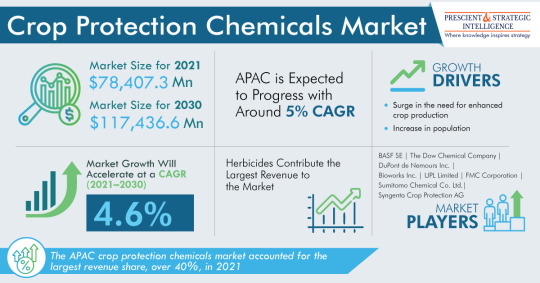
View On WordPress
#agriculture#applications#crop protection chemicals#crop yield#fungicides#Growth#herbicides#industry#insecticides#manufacturers#market#market analysis#pest control#pesticides#trends
0 notes
Text

#Biradar Agro Kendra#FOR MORE INFORMATION CONTACT:9611562705#Email-ID:[email protected]#BiradarAgroKendra#manufacturer#agricultural#equipment#products#includingtractors#fertilizers#fungicides#herbicides#insecticides
1 note
·
View note
Text
Growth Strategies Adopted by Major Players in Turf Protection Market
In the dynamic landscape of the turf protection industry, key players like Syngenta Crop Protection AG (Switzerland), UPL Limited (India), Corteva Agriscience (US), Nufarm (US), Bayer AG (Germany), and BASF SE (Germany) are at the forefront of innovation and market expansion. These industry leaders are driving growth through strategic initiatives such as partnerships, acquisitions, and cutting-edge product developments, solidifying their positions as influential forces in shaping the future of the turf protection industry. Their efforts not only enhance their global presence but also set new benchmarks for industry standards and customer expectations. The global turf protection market size is estimated to reach $8.1 billion by 2028, growing at a 4.9% compound annual growth rate (CAGR). The market size was valued $6.4 billion in 2023.
Top Global Turf Protection Leaders to Watch in 2024
· Syngenta Crop Protection AG (Switzerland)
· UPL Limited (India)
· Corteva Agriscience (US)
· Nufarm (US)
· Bayer AG (Germany)
· BASF SE (Germany)
· SDS Biotech K.K. (Japan)
· AMVAC Chemical Corporation (US)
· Bioceres Crop Solutions (Argentina)
· Colin Campbell (Chemicals) Pty Ltd (Australia)
· ICL Group Ltd. (US)
Investments and Innovations: Key Strategies of Top Turf Protection Companies
🌱 Syngenta Crop Protection AG: Leading the Way in Integrated Pest Management
Syngenta Crop Protection AG, a global agribusiness based in Switzerland, operates prominently in the crop protection and seeds markets. The company offers a comprehensive range of herbicides, insecticides, fungicides, and seed treatments, helping growers worldwide enhance agricultural productivity and food quality. With a presence in over 90 countries, Syngenta’s reach is truly global. In October 2020, Syngenta further strengthened its position by acquiring Valagro, a leading biologicals company. Valagro’s strong presence in Europe, North America, Asia, and Latin America complements Syngenta’s existing crop protection chemicals. This acquisition allows Syngenta to offer more integrated pest management strategies that reduce reliance on synthetic chemicals, while Valagro’s expertise in plant nutrition promotes healthier turfgrass growth and improved soil health.
Know about the assumptions considered for the study
🌍 UPL Limited: Innovating Turf Management Solutions Globally
UPL Limited, formerly known as United Phosphorus Limited, is a global agrochemical company based in India, providing a wide range of agricultural solutions, including crop protection products, seeds, and post-harvest solutions. UPL is a key player in turf management, offering innovative solutions for golf courses, sports fields, and other turf areas. Their product portfolio includes herbicides, fungicides, insecticides, and plant growth regulators, all designed to enhance turf quality and health while effectively controlling pests and diseases. Operating in over 130 countries across North America, South America, Europe, and Asia Pacific, UPL has 28 manufacturing sites worldwide, solidifying its position as a leader in the global turf protection market.
🏆 Bayer AG: Streamlining for a Focused Future in Turf Protection
Bayer AG, a multinational pharmaceutical and life sciences company headquartered in Leverkusen, Germany, operates across three business segments: Pharmaceuticals, Consumer Health, and Crop Science. The company’s Crop Science division caters to the turf protection market, offering products such as herbicides, insecticides, and fungicides. With operations in over 90 countries, including regions like North America, South America, Europe, the Middle East, Africa, and Asia Pacific, Bayer maintains a strong global presence. In March 2022, Bayer sold its Environmental Science Professional business, which includes turf protection products, to private equity firm Cinven for USD 2.6 billion. This strategic divestment is part of Bayer’s ongoing efforts to streamline its portfolio and concentrate on core businesses, ensuring a more focused approach to its future operations.
16 notes
·
View notes
Text

Producing JP-7, the fuel that powered the SR-71 Blackbird, caused a nationwide shortage of bug spray. Here’s why.
The SR-71 Blackbird
In the 1960’s, the US Air Force (USAF) developed the SR-71 Blackbird, a plane that could travel more than 3 times as fast as the sound produced by its own engines.
SR-71 T-Shirts
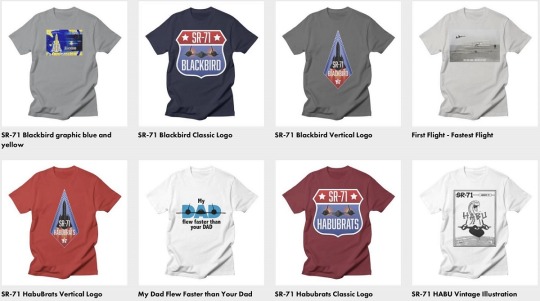
CLICK HERE to see The Aviation Geek Club contributor Linda Sheffield’s T-shirt designs! Linda has a personal relationship with the SR-71 because her father Butch Sheffield flew the Blackbird from test flight in 1965 until 1973. Butch’s Granddaughter’s Lisa Burroughs and Susan Miller are graphic designers. They designed most of the merchandise that is for sale on Threadless. A percentage of the profits go to Flight Test Museum at Edwards Air Force Base. This nonprofit charity is personal to the Sheffield family because they are raising money to house SR-71, #955. This was the first Blackbird that Butch Sheffield flew on Oct. 4, 1965.
Throughout its nearly 24-year career, the SR-71 spy plane remained the world’s fastest and highest-flying operational aircraft. Flying at Mach 3+ from 80,000 feet, it could survey 100,000 square miles of Earth’s surface per hour. And in the off chance an enemy tried to shoot it down with a missile, all the Blackbird had to do was speed up and outrun it.
Its engineering was so cutting edge that even the tools to build the SR-71 needed to be designed from scratch.
JP-7, the SR-71 Blackbird fuel
In fact, given that the Blackbird became so hot because it cruised at a speed of Mach 3.2 conventional jet fuel could not be used in it. A jet fuel with a high flash point, and high thermal stability was required. To satisfy this requirement Shell produced a special blend of fuel called JP-7.
Specifically, JP-7 fuel (referred to as Jet Propellant 7 prior to MIL-DTL-38219) was developed for the Blackbird’s Pratt & Whitney J58 (JT11D-20) turbojet engine. During flight, the SR-71 could attain speeds in excess of Mach 3+, which was the most efficient cruising speed for the J58 engines. However, very high skin temperatures were generated at this speed due to friction with the air. A new jet fuel was needed that was not affected by the heat, so JP-7 jet fuel, with a high flash point and high thermal stability, was developed for this purpose.
JP-7 fuel production caused a nationwide shortage of bug spray
According to the SR-71A Flight Manual, “The operating envelope of the [J58] JT11D-20 engine requires special fuel. The fuel is not only the source of energy but is also used in the engine hydraulic system. During high Mach flight, the fuel is also a heat sink for the various aircraft and engine accessories which would otherwise overheat at the high temperatures encountered. This requires a fuel having high thermal stability so that it will not break down and deposit coke and varnishes in the fuel system passages. A high luminometer number (brightness of flame index) is required to minimize transfer of heat to the burner parts. Other items are also significant, such as the amount of sulfur impurities tolerated. Advanced fuels, JP-7 (PWA 535) and PWA 523E, were developed to meet the above requirements.”
Producing JP-7, the fuel that powered the SR-71 Blackbird, caused a nationwide shortage of bug spray. Here’s why.
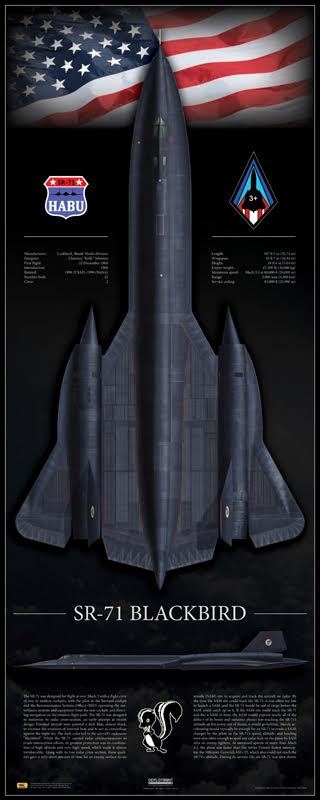
This print is available in multiple sizes from AircraftProfilePrints.com – CLICK HERE TO GET YOURS. SR-71A Blackbird 61-7972 “Skunkworks”
Flit mosquito repellant
Noteworthy, JP-7 production caused a nationwide shortage of bug spray.
Shell Oil developed JP-7 in 1955. Manufacturing several hundred thousand gallons of the new fuel required the petroleum byproducts Shell normally used to make its Flit insecticide, causing a nationwide shortage of that product!
One of the ingredients in JP-7 just so happened to be a crucial part of Flit mosquito repellant. Bearing in mind the huge amount of fuel we’re talking about here, Shell didn’t exactly have enough supply to meet the newly increased demand, so mosquitos everywhere caught a lucky break!
JP-7 had a high flashpoint. It was not flammable and every time an SR-71 needed fuel, tankers were always there, they were terrific and deserve high praise.
SR-71 Blackbird JP-7 fuel used by the Boeing X-51 Waverider
Today the JP-7 fuel is used by the Boeing X-51 Waverider in its Pratt & Whitney SJY61 scramjet engine, with fuel capacity of some 270 pounds (120 kg). As with the SR-71, the X-51A design super-cools this fuel (cooled by extended subsonic flight in the stratosphere; prior to acceleration to supersonic speeds); then, when in supersonic flight, the fuel is heated by its circulation through heat exchangers which transfer to it the heat load of the interior spaces of the airframe. The fuel is then pumped through rotating mechanical parts of the engines and auxiliary mechanical equipment, providing both lubrication and cooling. Finally, at a temperature of nearly 550 °F (290 °C), it is pumped into the fuel nozzles of the engines.
Be sure to check out Linda Sheffield Miller (Col Richard (Butch) Sheffield’s daughter, Col. Sheffield was an SR-71 Reconnaissance Systems Officer) Twitter X Page Habubrats SR-71 and Facebook Page Born into the Wilde Blue Yonder for awesome Blackbird’s photos and stories.
Photo credit: U.S. Air Force
@Habubrats71 via X
11 notes
·
View notes
Text
Globally, food systems account for over one-third of all greenhouse gas (GHG) emissions, which includes agriculture and pesticide use. Pesticides exacerbate the climate emergency throughout their lifecycle via manufacturing, packaging, transportation, application, and even through environmental degradation and disposal. Many of the world’s biggest oil companies such as ExxonMobil, Shell and ChevronPhillips Chemical produce pesticides or their chemical ingredients. Despite this, pesticide reduction as a solution to the climate crisis has largely been ignored. Pesticide use is even presented as a climate mitigation strategy by the agro-chemical industry, which perpetuates the myth that intensifying food production through the continuous use of harmful chemicals is the only way to guarantee global food security while protecting precious habitats. Unless we change our approach, the impacts of the climate emergency are expected to lead to an increase in pesticide use, which will create a vicious cycle between chemical dependency and worsening climate breakdown. As temperatures rise, the amount of pests increase and crop resilience goes down, requiring ever-larger amounts of pesticides. This rise in pesticide use will cause insects and weeds to develop resistance to herbicides and insecticides in greater numbers, while also continuing to harm human health and the environment.
47 notes
·
View notes
Text
another aspect of it is. whenever i see people say shit like "we should just permanently exterminate all mosquitos" or whatever bug it is this time, i remember how the history of mosquito and termite extermination are really heavily tied to colonial rule, like literally some of the same organizations existing today that provide insecticide-treated mosquito nets (which aren't more effective than locally produced mosquito nets*, and can even make the problem worse, but which can be manufactured elsewhere and sold to local people), are orgs that were founded over a century ago w the stated aim of eliminating malaria specifically so large swathes of africa would be more suited for white people to displace local people
*because they ultimately produce mosquitos resistant to insecticides and which alters their swarming behavior such that even regular nets are less effective, making a feedback loop of relying on the insecticide nets...
like i'm not saying malaria is actually super good and awesome or that you have to smile indulgently whenever a mosquito bites you, just that poorly thought out statements abt the extermination of certain insects without consideration or thought has a really awful history & consequences
10 notes
·
View notes
Note
Do you have any known allergies which might cause symptoms like that? Perhaps your mother laced the book with something she knew you were allergic to?
Also, have you checked online if anyone else has had a similar experience? Perhaps there was a quality control issue during the book's manufacturing. Like, that print run got noxious chemicals spilled on it.
Do you remember if the book was brand new or second hand?
so!
- i have no known allergies. closest thing was an allergy attack when i was 6 and had to wear foundation (and a bunch of makeup in general) for a show i was part of, which i happily used as an excuse to wear as little makeup as possible (and specifically not foundation) during my teens. on the contrary i was always the "tough and healthy" one in my family
- as far as my suspicions go, i'm considering some sort of insecticide or something. she did a lot of gardening and was an extreme cleaning freak and germaphobe extraordinaire, so she had a lot of toxic cleaning products and rat poison/herbicide/pesticide/etc on hand
- your idea about the faulty production is intriguing! no idea how i'd check however, and i doubt any really toxic products are in use in the production of really popular, cheap paperbacks like this one....? at least i would hope so... it was in pristine condition, and the book was brand new, as i remember, and i didn't notice any specific smell either. i assume a chemical spill would have been noticeable and the contaminated books would not have been sold in the first place, but worth investigating anyway!
3 notes
·
View notes
Text
THIAMETHOXAM 25% WG | Peptech Bioscience Ltd | Manufacturer and Exporter
Thiamethoxam is a systemic insecticide with a broad spectrum of action. It has both gastrointestinal and contact action. It is a granular soluble pesticide in the Neonicotinoid class. It is particularly effective against a wide range of sucking, soil, and leaf-dwelling pests at modest application rates as a systemic insecticide, it should be sprayed at the prescribed dose during the initial stage of infestation. To avoid resistance issues in the long run, it is best to alternate with another group of insecticides.
Company Name : Peptech Biosciences Ltd. Phone : 7291990294 Address : 905, 9th Floor, Big joes Tower, Netaji Subhash Place, New Delhi Email : [email protected]
Product Link:

2 notes
·
View notes
Text
Pest Control manufacturer in Gujarat
Dharmaj Crop Guard Ltd. is the best pest control chemical manufacturer in Ahmedabad,
Dharmaj Crop Guard Ltd. continually improves and assesses its offerings to find fresh approaches to the issues facing Indian farmers. They are dedicated to the best possible resource usage and creative efforts for the welfare of their farming community. The company is fully devoted to and has established a strategy of continual expansion and development of high-value brands with a focus on registration and marketing.
#dharmaj crop guard#agriculture#farmer#agro chemicals#pest control#pest control manufacturer#agrotech#fungicide product#insecticide manufacturer#pesticide products
0 notes
Text
Essential Oils: Eucalyptus Eucalyptus globulus
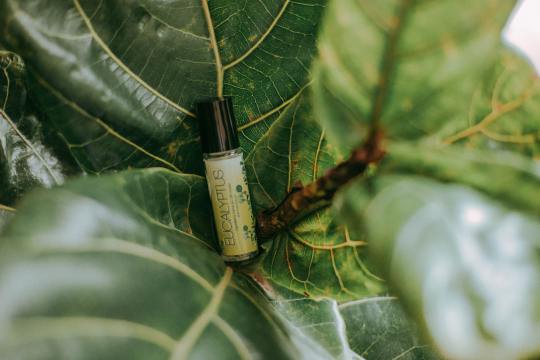
The following information is from Essential Oils for Beginners: The Guide to Get Started with Essential Oils and Aromatherapy by Althea Press.
DESCRIPTION There are over seven hundred eucalyptus species, many of which are used in the production of eucalyptus essential oil. Only a handful of these species are effective when used in aromatherapy. Of these, Eucalyptus globulus is most popular, and it should not be confused with E. radiata (sometimes nicknamed black peppermint essential oil), E. citriodora (lemon eucalyptus essential oil), or any other type of eucalyptus essential oil. Eucalyptus essential oil has a fresh woody, earthy fragrance, with a strong medicinal aroma and a thin consistency. When used in aromatherapy, it is considered a top note.
ORIGIN Australia, Brazil, Spain
PROPERTIES Antiaging, antibacterial, antifungal, anti-infectious, anti-inflammatory, antirheumatic, antiseptic, deodorant, expectorant, insecticide, mucolytic
APPLICATION Eucalyptus essential oil should be diluted 50:50 with a carrier oil prior to use. It is suitable for direct inhalation, diffusion, and topical application. Eucalyptus globulus is suitable for ingestion; other forms of eucalyptus essential oil are not.
PRIMARY USES Soothes arthritis, rheumatism, and muscle pains; eases sinusitis, coughs, bronchitis, cold and flu symptoms, and ear inflammation; combats candida, chicken pox, and measles symptoms; reduces acne; cleanses minor wounds; eases diabetes symptoms; boosts immune system. Eucalyptus essential oil is used in manufacturing, as a fragrance for cosmetics and perfumes, and in antiseptics, ointments and liniments, cough drops, toothpaste, and other products. Some dentists use eucalyptus oil as a solvent for root canal fillings. It is also often used for treating chronic obstructive pulmonary disease (COPD) and cancer. In addition, eucalyptus essential oil is useful as an insect repellent and as a natural flea deterrent. When properly diluted, it can be used on pets as well as humans. It makes a fantastic addition to massage oils and lotions, household cleaning products, and bath products, including shampoos and conditioners. When inhaled, eucalyptus essential oil can be used to promote emotional well-being, and during meditation it is useful for focusing on relationships.
SAFE USE Eucalyptus oil must be diluted prior to use. Add one part essential oil to four parts carrier oil before adding to any recipe or applying topically. Only use therapeutic-grade eucalyptus oil, and conduct a patch test using diluted eucalyptus essential oil prior to applying any product that contains it.
#green witch#green witchcraft#nature witch#nature witchcraft#cottage witch#pagan witch#witch community#pagan community#witchblr
5 notes
·
View notes
Text
Top 10 Insecticides Manufacturer in Oman in India
Insecticides Manufacturer in Oman are chemical substances or formulations designed to kill, repel, or control insects. They are used in agriculture, public health, forestry, and residential settings to protect crops, animals, and people From the damage and health risks associated with insect pests. Insecticides come in various forms, including liquids, powders, granules, and aerosols, and they can have different modes of action to target specific types of insects.
Visit Us: Insecticides Manufacturer in Oman
ADDRESS:
Office No - 704, 7th Floor, Akashdeep Building, Barakhamba Road, New Delhi - 110001
EMAIL:
PHONE:
+91 98370 22119
0 notes
Text
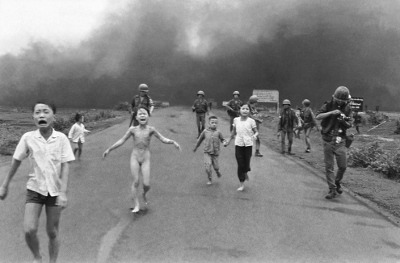
In 1942, a team led by chemist Louis Fieser originally developed napalm for the US Chemical Warfare Service in a secret laboratory at Harvard University. The name “Napalm” is a portmanteau of two of the constituents of the original thickening and gelling agents: naphthenic acid and palmitic acid. The addition of these two helps gelatinize combustible materials like gasoline, which then sticks to surfaces and burns, causing more damage. Napalm was widely applied by the US during the Korean War for close air support. It also became an intrinsic element of US military action during the Vietnam War. Reportedly about 352,000 tonnes of napalm bombs were dropped in the region within 10 years. The image shows a girl named Phan Thị Kim Phúc at nine years of age running naked on a road after being severely burned on her back by a South Vietnamese napalm attack.

naphthenic acid
Naphthenic acids (NAs) are a mixture of several cyclopentyl and cyclohexyl carboxylic acids. NAs is mainly used in the soap, textile and leather industries. It can also be used in the manufacture of disinfectants and insecticides, or in the manufacture of dry agents and brighteners for the paint and coating industry. NAs soap is also a good emulsifier and it is widely used to prepare lubricating coolant for metal working.
palmitic acid
Palmitic acid, or hexadecanoic acid in IUPAC nomenclature, is the most common saturated fatty acid found in animals, plants, and microorganisms. As its name indicates, it is a major component of the oil from the fruit of oil palms.
#war history#war#korean war#vietnam war#world war ii#chemistry#organic chemistry#chemistry student#chemical weapons#information#factsmatter
2 notes
·
View notes
Text
Chlorfenapyr Market Size, Trends, and Growth Forecast to 2025
Market Overview
The chlorfenapyr market is experiencing steady growth due to its increasing use in agriculture, pest control, and public health applications. Chlorfenapyr is a broad-spectrum insecticide and acaricide used to control various pests, including termites, mosquitoes, and agricultural insects. It is widely applied in crops, stored grains, and urban pest management due to its effectiveness against insecticide-resistant pests.
Get free sample copy @ https://www.statsandresearch.com/request-sample/26998-global-chlorfenapyr-market
Market Insights
Market Growth Drivers
Rising Demand for Crop Protection Solutions: The increasing need for higher agricultural yields is driving the use of effective pesticides like chlorfenapyr.
Growing Concerns Over Insecticide Resistance: Pests developing resistance to traditional insecticides have led to increased demand for newer, more potent chemicals.
Expanding Urban Pest Control Market: The product is widely used in termite control, mosquito control, and general pest management in residential and commercial areas.
Government Initiatives for Vector Control: Public health agencies use chlorfenapyr to combat disease-carrying insects like mosquitoes, which transmit malaria and dengue.
Market Challenges
Regulatory Restrictions: Chlorfenapyr is subject to stringent environmental and health regulations in some regions, limiting its market penetration.
Toxicity Concerns: Though effective, chlorfenapyr can pose risks to non-target species, leading to restrictions in certain applications.
Competition from Alternative Pesticides: Other bio-based or less toxic insecticides may replace chlorfenapyr in some markets.
Fluctuating Raw Material Costs: The cost of raw materials and production can impact the price and availability of chlorfenapyr-based products.
Get full report @ https://www.statsandresearch.com/report/26998-global-chlorfenapyr-market/
Key Players in the Chlorfenapyr Market
BASF SE (Germany) – A leading global supplier of chlorfenapyr-based insecticides.
FMC Corporation (USA) – A key player in agricultural and urban pest control solutions.
Gharda Chemicals Ltd. (India) – A significant producer of technical-grade chlorfenapyr.
Shandong Weifang Rainbow Chemical Co. Ltd. (China) – A major manufacturer in Asia.
Jiangsu Yangnong Chemical Co., Ltd. (China) – Specializes in pesticide formulations.
Nihon Nohyaku Co., Ltd. (Japan) – A prominent agrochemical company focusing on pesticide innovation.
Regional Analysis
1. North America
The United States is a major consumer, driven by demand for agricultural pest control and urban pest management.
Stringent EPA regulations govern chlorfenapyr use, impacting product approvals.
Growing use in termite control and vector management programs.
2. Europe
The European market is highly regulated, with limited applications allowed due to environmental concerns.
The UK, Germany, and France use chlorfenapyr in specific agricultural and pest control applications.
Growing demand for alternative pest control solutions could affect long-term market growth.
3. Asia-Pacific
China and India are leading producers and consumers, with expanding agricultural and pest control industries.
Japan and South Korea use chlorfenapyr extensively in crop protection.
Increasing urbanization and rising demand for insecticides in Southeast Asia drive market growth.
4. Middle East & Africa
Rising vector-borne disease control programs boost demand in Africa.
Agricultural expansion in the Middle East supports moderate market growth.
Import-dependent in many countries due to lack of local manufacturing.
5. Latin America
Brazil, Argentina, and Mexico are major agricultural users of chlorfenapyr.
Expanding agriculture and pest control industries drive demand.
Regulatory challenges may limit growth in some countries.
Get enquiry before buying @ https://www.statsandresearch.com/enquire-before/26998-global-chlorfenapyr-market
0 notes